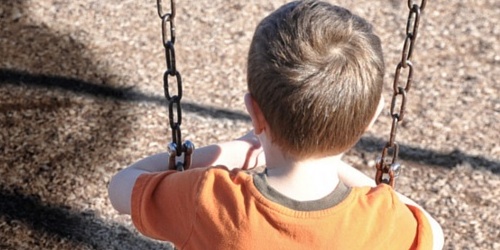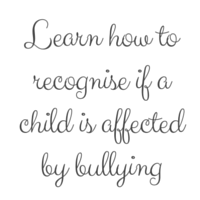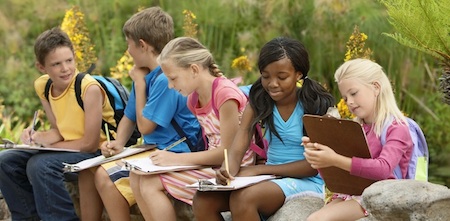- Welcome
- Bullying
Bullying
Bullying is a serious problem in our communities. Unfortunately this fact is still a sensitive subject which is not discussed widely enough in the educational sector. The harsh reality is often overlooked and consequences are often not recognised as symptomatic to the constant harassment, peer pressure and victimisation which some children and teens experience on a daily basis.
It is a known fact that this kind of victimisation affects and threatens any child's (and the family's) health and well-being. Often this occurrence is not acknowledged as such by well-meaning members of the family and friends or even educators who often refer to bullying as 'boy's games' or 'this is just a bit rougher than the usual kids’ games’ or 'subjective feelings of insecurity'.
Is your child being bullied?
Bullying is seen as repeated negative behaviour by a person towards another person. According to statistics presented by UCLA in 2014, more than 28% of all kids in grades 6 to 12 who were attending US schools reported that they had experienced bullying. This can affect children and adults alike, it can happen in schools, sports clubs, social clubs or at the workplace. Mostly, however, it affects children or persons who are seen as different in one way or the other and are thus seen as 'victim'. Ill-intentioned, aggressive behaviour is mostly directed toward these 'victims'.
 Bullying affects one of of four children
Bullying affects one of of four childrenWhat is Bulling?
Bullying is mostly unprovoked by the 'victim' and shows a power imbalance between people. This imbalance is used to put pressure on the less powerful perceived individual and manipulation occurs.

The forms of harassment range widely from quite subtle labelling or spreading of rumours and gossip to the manipulation of friendships as well as physical attacks. However, all these lead to physical injury and emotional distress. This impacts the daily life of all affected, children, teenagers, adults and their families as well as their social environment. All involved, meaning the bullied person, the bully and the 'bystanders' have to learn how to recognise destructive behaviour as soon as possible to minimise the damages. So how do we recognise if your or another child, a pupil, a friend is being bullied?
There are various kind of being and feeling bullied, which are sometimes hard to recognise. Bullies or 'aggressors' use the following ways of belittling their 'victims':
- Psychological: name-calling, labeling, spreading rumours,
threats,cursing
- Social: distancing, dicing, avoiding, insulting remarks, teasing
- Physical: injury, bodily harm, pushing, kicking, hitting, scratching, pulling,
- Cyber-Bullying: internet and social media based spreading of rumours, name-calling, inappropriate language, threatening
Children who are bullied often display different likes and dislikes or appear having changed their attitude and preferences towards certain people and activities. As parents we have encountered the challenges hurtful incidents in our lives presented to us and thus feel very strongly that parents should look out for these common symptoms and changes in their children's behaviour.
7 Common Signs and Symptoms to recognise if a child is affected
Children and teens who are bullied:
- often display unhappiness to attending pre-school, school, after-school activities if they are bullied in this environment. They might not want to join their sport's team events, participation in their clubs or societies they previously enjoyed being part of, if they experienced harassment and manipulation at these events or activities
- might act differently than before the bullying incident, can get quick mood swings, display anger and aggression and do react with hesitation if confronted with the bully or when interrogated about the incident
- become reclusive and often withdraw from their usual activities and interact less with their peers. They may play more with pets than before or display increasing 'antisocial' activities such as reading, studying, playing computer games, solitary play
- become sick and display illnesses such as recurring headaches, stomach aches and might be displaying other symptoms such as food sensitivities and even high fevers which are unrelated to a cold or flu
- start 'acting out', displaying tantrums, or cry more easily, become more 'touchy' or 'clingy' and insecure. Some might seek constant assurance and seem to be more dependant on the parents or persons they trust
- may even seem to withdraw from their loved ones and act out on otherwise insignificant disagreements with their siblings and parents. In the safe environment of a loving home bullying victims often vent their anger and pain from being put under too much pressure at school, in the sports team or in other for them unsafe environments where bullying occurs.
- may even have visual physical injuries such as bruises, scratches, cuts and grazes from being pushed or hit by others
7 Prevention Tips
Anti-bullying Tactics
Actions have to been taken by the families of the bullied child, the immediate social circle, the school and wider community.
- Improve supervision in the school or social groups and get (more) involved in the activities of the child
- Assess the school/club environment and conduct surveys among the kid's peers and leadership groups.
- Adopt an anti-bullying policy and observe enforcement of the rules. Enforcement of school rules as policies are often implemented but not enough enforced and rarely evaluated.
- Increase communication between all groups and improve cooperation between professionals such as educational psychologists, parent's associations, school staff and school leadership groups.
- Introduce workshops for learners (and parents) and discuss problems and workshops for educators to increase knowledge about teaching behavior management techniques.
- Teach conflict resolution and anger management skills to improve problem solving strategies.
- Improve the self-esteem of all children - not only the victim, aggressor and bystanders of incidents - and focus on the individual development of special talent and strengths of all pupils to increase positive recognition of difference and diversity. Read more about embracing diversity in classrooms here.
Recommended Resources and Further Reading
Great resources to read about this topic, get insights and find help:
For parents:
For pupils/students:
- Very useful Powerpoint Show
- Stop this! - What you can do!
For teachers:
About
Regina Gräff is the founder and editor of the free info sites ExpatCapeTown.com and Kids-World-Travel-Guide.com and co-author of the 'Living in South Africa' handbook. Born and raised in Germany, she has a MA phil degree in languages and intercultural communication. Regina is a serial expat and has worked as a teacher and educational consultant in various countries including the USA, Australia, Singapore and the UK. Since 2005, she lives with her family in Cape Town/South Africa.
Related Posts
Images on this page: Shutterstock.com

